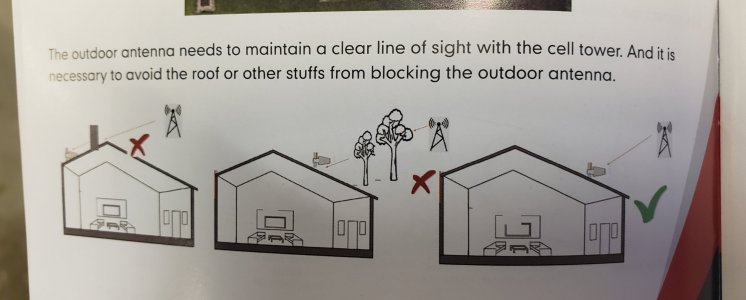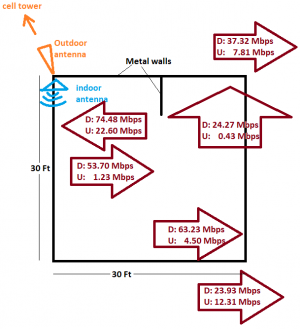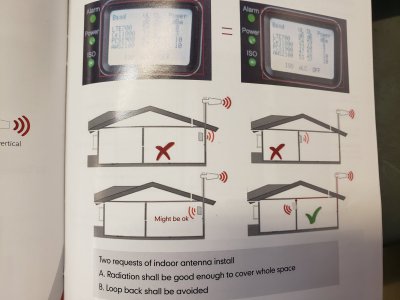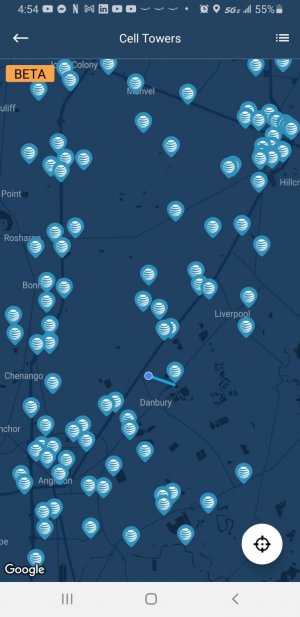- Joined
- Oct 29, 2012
- Messages
- 1,328
I had my 30x30 metal workshop built with no windows because of cost, better security, and so it would be cheaper to keep climate controlled. In other words I had a Faraday cage built. Now that I'm working from home, I have to be able to answer the phone when it rings or else I'm "not at work." My phone used to work reliably over my WiFi in shop using WiFi calling, but for the past 2 years our internet has been spotty and the lone service provider does not seem interested in fixing it. I missed a few important calls a couple months ago so I started cracking the roll-up door and setting my phone under it, so that I could get cell signal without leaving the shop. That got old fast, as my A/C was running full tilt trying to cool the outdoors. I made one last ditch effort to get my ISP to fix the internet, that didn't pan out, so I bought and installed this thing. It works. It takes cell signal (including 4G/5G) from outside and re-broadcasts it inside. There were cheaper ones making the same claims but the reviews weren't as good and I didn't want to screw around with a $150 unit, be disappointed, and then end up paying an additional $400 for this one.
This isn't a paid review; I'm just a happy customer and I thought I would share this here as I suspect I'm not the only one working inside a Faraday cage with no cell signal. Hopefully this helps someone.
I was worried when the manual said the antenna needs clear line of sight to a cell tower and my nearest tower is 1.5 miles away across a dozen tree lines, but I just pointed the outdoor antenna in that direction and got good signal anyway.

I was surprised to find that this thing actually increases 4G internet speed. I guess I shouldn't be surprised as it has "booster" in the name after all, but I was only expecting it to boost the signal strength (5 bars vs 1 or 0 bars), not actually boost the speed (75 Mbps vs 25 or 35 Mbps). I guess that reveals my ignorance of how cellular networks work. Here are some speed tests I did inside the shop at a few locations and outside at a few locations.

Speed inside is consistently higher than outside, except for the top right corner, which suffers a double-whammy of being behind a steel wall and also at the very fringe of the indoor antenna's radiation pattern because I installed the indoor antenna flat against the back wall instead of at a 45 degree angle which would have been better.
According to the manual my antenna placement (indoor vs outdoor) is not ideal because if the two antennas are near each other they can interfere with one another, but since there is a steel wall between them I figured it would be fine, and it was.

This isn't a paid review; I'm just a happy customer and I thought I would share this here as I suspect I'm not the only one working inside a Faraday cage with no cell signal. Hopefully this helps someone.
I was worried when the manual said the antenna needs clear line of sight to a cell tower and my nearest tower is 1.5 miles away across a dozen tree lines, but I just pointed the outdoor antenna in that direction and got good signal anyway.

I was surprised to find that this thing actually increases 4G internet speed. I guess I shouldn't be surprised as it has "booster" in the name after all, but I was only expecting it to boost the signal strength (5 bars vs 1 or 0 bars), not actually boost the speed (75 Mbps vs 25 or 35 Mbps). I guess that reveals my ignorance of how cellular networks work. Here are some speed tests I did inside the shop at a few locations and outside at a few locations.

Speed inside is consistently higher than outside, except for the top right corner, which suffers a double-whammy of being behind a steel wall and also at the very fringe of the indoor antenna's radiation pattern because I installed the indoor antenna flat against the back wall instead of at a 45 degree angle which would have been better.
According to the manual my antenna placement (indoor vs outdoor) is not ideal because if the two antennas are near each other they can interfere with one another, but since there is a steel wall between them I figured it would be fine, and it was.

Last edited:


